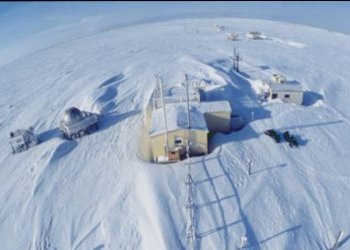The amount of carbon dioxide or CO2 gas in the Arctic’s atmosphere has hit a “milestone” level – reaching 400 parts per million (ppm) this spring, according to American scientists.
Researchers from the US Government’s National Oceanic and Atmospheric Administration (NOAA) say this is the first time a monthly average measurement for CO2 hit the 400 ppm mark in a remote location.
Carbon dioxide is emitted by burning fossil fuels. It is the most significant greenhouse gas contributing to climate change.
Apart from the Barrow site in Alaska (pictured), six other northern locations also reached 400 ppm at least once this spring, including Canada, Iceland, Finland and Norway.
Researchers say this could mean higher CO2 levels around the world are on the way.
Pieter Tans, an atmospheric scientist with NOAA’s Earth System Research Laboratory (ESRL) in Boulder, Colorado said: “The northern sites in our monitoring network tell us what is coming soon to the globe as a whole. We will likely see global average CO2 concentrations reach 400 ppm about 2016.”
The rising amount of carbon dioxide is likely to have an unpredictably fast effect on global warming.
“Turning up the levels of greenhouse gases in our atmosphere is like turning up the dial on an electric blanket,” said Jim Butler, director of the ESRL Global Monitoring Division. “You know it will keep getting warmer, but you don’t know how quickly the temperature will rise and it can take a while for the blanket – or the atmosphere – to heat up.”
The concentration of gas in the atmosphere has been consistently rising since 1959, say researchers, in the early 1960s, rising about 0.7 ppm per year. For the last decade, it has been rising at about 2 ppm per year.
The high CO2 level came at the peak of carbon dioxide’s natural cycle – plant growth cycles remove the gas from the air during late spring and summer and add it back during fall, winter and early spring.
Next year scientists expect it to hit 402 ppm or higher at the same northern sites.





